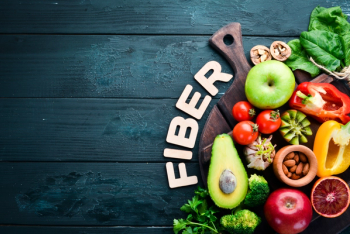
Which Natural Colors Should FDA Approve Next?
Coloring experts reveal some of the natural colorants they hope to soon see approved on the U.S. market.
When FDA approved spirulina for use as a colorant in foods last year, it opened up a whole new world of blue and green possibilities on the U.S. market. And it came just in time, as General Mills, Nestlé USA, Kraft, and other mainstream companies have recently announced plans to make the move from synthetic to natural colors.
However, there are still major gaps in the natural color palette approved for use in the U.S. Trix cereal, one of the General Mills brands that will transition to natural colors by the end of the year, has historically had six differently colored puffs. The revamped, naturally colored version will have just four different colors because artificial blue and green proved too difficult to reproduce with natural colorants (apparently spirulina wasn’t a feasible option in that case).
So what are the next ingredients FDA should approve for use as colorants in food, beverages, and dietary supplements? Several coloring experts shared with Nutritional Outlook their take on the most promising candidates at the 2015 Institute of Food Technologists’ Annual Meeting & Food Expo.
Sorghum
Sorghum has found a following on the U.S. market in recent years as an ancient grain alongside quinoa, chia, millet, amaranth, flax, and others, but it could also be a useful colorant.
According to Stephen Lauro, president of colorMaker (Anaheim, CA), a purple color can be derived from the husk of sorghum.
There are some natural purple ingredients available on the market already, such as carmine, but pH limitations and other formulation factors means there’s always room for more purples.
Red Yeast Rice
A red species of mold, red yeast rice (Monascus purpureus) could also fill some gaps on the red side of the natural color wheel, if approved as a colorant by FDA. Red can also be
“Red rice yeast, also known as monascus, is a very, very old ingredient in Asia,” Says Lauro. “But we’re starting to see more and more of it in nutraceutical products where it delivers some claimed nutrition but also a red color.”
Red yeast rice has also been studied and marketed as an ingredient for lowering cholesterol.
Carthamus
Natural yellows and greens are two colors that are especially in need of more approved U.S. colorants, says Peter Thorninger, senior vice president, sales and marketing, Chr. Hansen (Hørsholm, Denmark). That's part of what makes carthamus such an appealing prospect.
Thorninger say carthamus produces a “nice transparent yellow shade.” It is already in use in the European Union as an extract from the flower Carthamus tinctorius.
Steve Morris, general manager of food colors North America at Sensient Colors (St. Louis), also says carthamus would be a useful addition to the list of approved U.S. colorants. Yet, it could still be years before FDA approves carthamus-or any other new ingredient-as a colorant.
“The approval process in the U.S. is pretty cumbersome,” says Morris. “Spirulina was just approved over the last year and that took several years.”
But as clean-label hypes continues to build, consumer interest in more natural color ingredients isn’t going away anytime soon.
Read more:
Michael Crane
Associate Editor
Nutritional Outlook Magazine
michael.crane@ubm.com
Newsletter
From ingredient science to consumer trends, get the intel you need to stay competitive in the nutrition space—subscribe now to Nutritional Outlook.





